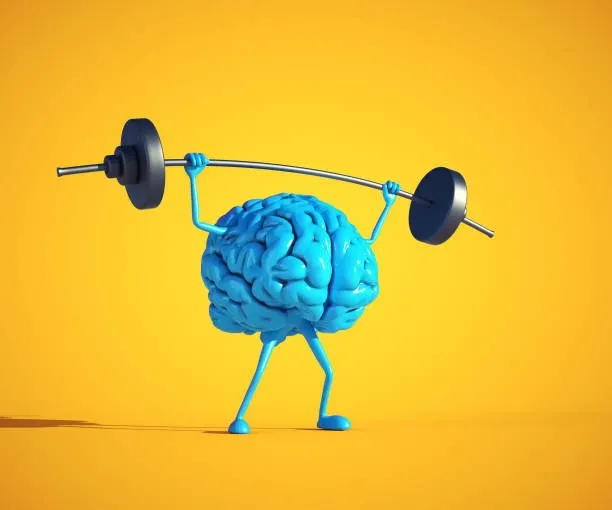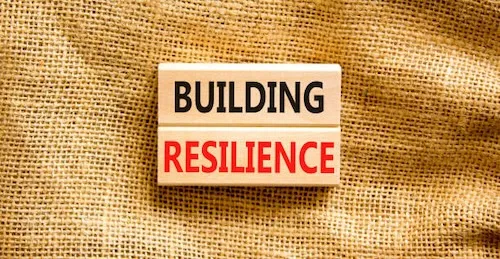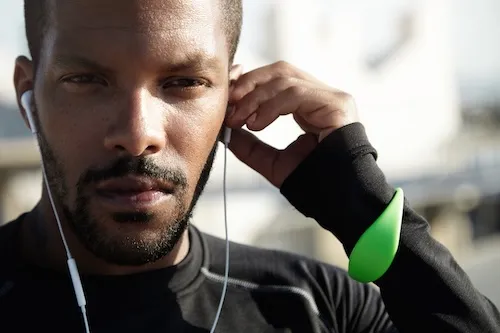Imagine a world-class athlete preparing for competition.
They don’t just show up on game day hoping for the best. They follow a structured training regimen, deliberately building strength, endurance, and skill through consistent practice.
Now, imagine applying that same methodical approach to your mental capabilities.
What if you could train your brain with the same dedication and precision elite athletes bring to their physical training?
Our personal development platform has discovered that mental fitness follows many of the same principles as physical fitness. Just as muscles grow stronger with targeted exercise, your brain’s neural pathways strengthen with deliberate practice.
And like physical training, the benefits extend far beyond performance – mental fitness enhances your overall wellbeing and life satisfaction.
Yet, most of us invest far more time in our physical appearance than our mental capabilities.
We hit the gym to build our bodies but neglect the daily practices that would strengthen our minds. Our healthy lifestyle community believes this imbalance is one of the most significant missed opportunities for personal growth and fulfillment.
Ready to start training your brain like the elite athlete it was designed to be? Let’s begin with your daily mental workout regimen.
Your Brain is Like a Muscle. Use It or Lose It.
Just as physical exercise enhances muscle strength, your brain responds to regular mental workouts with improved function and capacity. Neuroscience research confirms that our brains demonstrate remarkable neuroplasticity – they have an amazing ability to form new neural connections throughout life in response to stimulation and challenge.
Our healthy lifestyle community has witnessed how consistent mental exercise leads to measurable improvements in attention span, processing speed, and problem-solving abilities. Like muscles that atrophy without use, cognitive functions decline when not regularly engaged and challenged.
Mind-body workouts are particularly effective for building cognitive stamina in a burnout-plagued world. Activities like yoga and tai chi (combining physical movement with mindfulness) enhance mental function and reduce stress hormones that can damage brain cells over time.
The 5-Minute Mental Exercises That Boost Cognitive Performance
The good news? You don’t need hours of intense study to strengthen your brain.
Research shows that consistently practicing brief, targeted exercises can yield impressive results. Our platform for social impact has developed several quick mental workouts that members can incorporate into even the busiest schedules:
- Attention Refocusing: Set a timer for 5 minutes and focus only on one task or object. When your mind wanders (which it will), gently bring it back. This simple practice strengthens your ability to sustain attention amid distractions.
- Memory Stacking: Memorize a list of 10 random items. After an hour, recall as many as possible. Each day, try to beat your previous performance.
- Sensory Awareness: Spend 5 minutes fully engaging with your environment through all five senses. Notice what you see, hear, feel, smell, and perhaps taste. This practice enhances your brain’s processing of sensory information and staying present.
- Reverse Routines: Brush your teeth with your non-dominant hand or take a different route to work. These small changes create new neural pathways and keep your brain flexible.
- Quick Visualization: Spend 5 minutes vividly imagining yourself completing an upcoming challenge. Engage all your senses in this mental rehearsal, as athletes do before competitions.
Through our personal development platform, we’ve found that members who incorporate just 15 minutes of these exercises daily report significant improvements in focus and mental clarity within a few weeks.
How Journaling, Visualization, and Mental Puzzles Create a Sharper Mind
Beyond quick exercises, certain sustained practices can dramatically enhance cognitive abilities when integrated into your routine:
Journaling
Writing by hand engages the brain differently than typing, activating regions associated with learning and memory. Our healthy lifestyle community advocates for reflective journaling, which helps process experiences, clarify thinking, and improve emotional regulation. Try these approaches:
- Stream-of-consciousness writing to clear mental clutter
- Gratitude journaling to retrain attention toward positive experiences
- Problem-solving journaling to work through challenges methodically
Visualization
Elite athletes use visualization to mentally rehearse performances, activating the same neural pathways used during physical execution. This practice strengthens neural connections without physical fatigue.
Mental Puzzles
Crosswords, Sudoku, and strategic games create novel cognitive challenges that build problem-solving abilities. These force your brain to work in unfamiliar ways, creating new neural connections and strengthening existing ones.
What makes these practices so effective is their complementary nature. Journaling enhances self-awareness and emotional processing, visualization builds performance capabilities, and puzzles improve logical reasoning and pattern recognition. Together, they create a comprehensive mental workout routine that addresses multiple aspects of cognitive fitness.
Emotional Endurance: How to Build Resilience & Stay Unshaken Under Pressure
A common misconception about mental toughness is that it means showing no emotion or vulnerability. True emotional resilience doesn’t come from suppressing or ignoring feelings but from understanding, accepting, and skillfully working with them.
Emotional intelligence (recognizing, understanding, and managing emotions in yourself and others) forms the foundation of mental toughness.
Research shows that individuals with high emotional intelligence handle stress more effectively and recover quickly from setbacks. They can identify emotional triggers before these emotions hijack their thinking, allowing them to respond thoughtfully rather than react impulsively.
Within our healthy lifestyle community, we emphasize that all emotions provide valuable information. Fear signals potential threats, anger highlights boundaries that have been crossed, and sadness often reflects important values or connections that have been compromised.
How Meditation, Breathwork, and Controlled Stress Exposure Build Resilience
Meditation
Regular meditation practice literally changes your brain’s structure, increasing density in regions associated with attention, emotional regulation, and body awareness. Even 10 minutes daily can:
- Strengthen your ability to observe thoughts without attaching to them
- Increase self-awareness of emotional patterns
- Improve recovery time after stressful events
- Enhance focus during high-pressure situations
Breathwork
Your breath provides a direct pathway to influence your nervous system. By controlling your breathing patterns, you can shift from the sympathetic “fight-or-flight” state to the parasympathetic “rest-and-digest” state. Techniques taught in our healthy lifestyle community include:
- Box breathing (4-count inhale, 4-count hold, 4-count exhale, 4-count hold)
- Diaphragmatic breathing to activate the vagus nerve
- Alternate nostril breathing for mental balance
Controlled Stress Exposure
Just as athletes progressively overload their muscles to build strength, you can gradually expose yourself to manageable stressors to build emotional resilience. This might include:
- Public speaking opportunities
- Difficult conversations you’ve been avoiding
- New social situations outside your comfort zone
- Physical challenges like cold exposure or endurance activities
The key is to calibrate these challenges to be stretching but not overwhelming, followed by periods of reflection and recovery.
The Navy SEAL Trick to Staying Calm in High-Stress Situations
Navy SEALs undergo some of the most demanding training in the world, designed to prepare them for high-stakes situations where clear thinking under extreme pressure is essential.
One of their most effective techniques for maintaining composure is remarkably simple: box breathing.
This structured breathing pattern – inhaling for four counts, holding for four counts, exhaling for four counts, and holding again for four counts – helps induce relaxation during high-stress situations by:
- Activating the parasympathetic nervous system
- Lowering heart rate and blood pressure
- Clearing the mind of distractions
- Creating a sense of control amid chaos
Through our personal development platform, members report using box breathing before essential meetings, during difficult conversations, and whenever they notice stress responses activating.
What makes this technique so powerful is its accessibility. It requires no equipment and can be practiced discreetly in virtually any situation. Temporarily shifting your focus to your breath creates space between stimulus and response, allowing for more reasoned decision-making even when under pressure.
The most resilient individuals don’t avoid stress. They develop specific tools to manage their physiological and psychological responses to it. With practice, these techniques become automatic, allowing you to maintain clarity and composure even in the most challenging circumstances.
How to Rewire Self-Doubt into Unstoppable Belief
The voice in your head is the most influential force in determining your performance and potential.
When you tell yourself “I can’t handle this” or “I’m going to fail,” your brain responds by preparing for a threat, activating stress responses that impair performance.
On the other hand, constructive self-talk like “I’ve prepared well” or “I can handle challenges” triggers neurological patterns associated with focus and optimal performance.
Most people don’t realize how frequently negative self-talk infiltrates their thinking. Our healthy lifestyle community members often report being shocked when they first monitor their internal dialogue, discovering patterns of self-criticism they weren’t fully aware of.
This process isn’t about toxic positivity or denying challenges. It’s about developing a more accurate, supportive internal dialogue reflecting your capabilities.
The “Athlete Mindset” Trick for Instantly Boosting Confidence Before Big Moments
Elite athletes often use specific mental routines before competitions to quickly shift into a performance-ready state. Through our platform for social impact, we’ve adapted these techniques for everyday challenges.
One particularly effective approach is the “power priming” routine:
- Physical reset: Stand tall with shoulders back and chest open (this “power posture” has been shown to lower cortisol and increase testosterone)
- Mental highlight reel: Spend 60 seconds recalling past successes, particularly in similar situations
- Performance anchoring: Create a specific physical trigger (like pressing your thumb and forefinger together) while in a confident state, then use this gesture to recall that state before important moments
- Intentional focus: Identify specifically what you want to focus on in the upcoming challenge (not the outcome, but the process)
This sequence is so effective because it combines physiological, emotional, and cognitive elements. You create a comprehensive state of readiness by aligning your body, memories, and attention.
Using this technique before job interviews, presentations, difficult conversations, and other high-stakes situations can dramatically improve subjective confidence and measurable outcomes.
Small Daily Wins Are the Secret to Long-Term Self-Belief
Confidence isn’t built through affirmations alone—it requires evidence. Your brain forms beliefs based on accumulated experiences, so systematic success experiences, even small ones, are crucial for developing unshakable self-belief.
Through our personal development platform, we emphasize the power of deliberately creating small wins:
- Skill chunking: Break complex skills into smaller components that you can master one by one
- Progressive challenges: Create a ladder of gradually increasing challenges, ensuring success at each step
- Success tracking: Document your daily progress, no matter how incremental
- Deliberate celebration: Take time to acknowledge each achievement, reinforcing the neural pathways associated with success
This approach builds what psychologists call “self-efficacy”. It’s the belief that you can execute the actions needed to achieve your goals. Unlike general self-esteem, self-efficacy is domain-specific and based on experience rather than general feelings about self-worth.
Stress Tolerance Training: How to Bulletproof Your Mind Against Anxiety & Overwhelm
Understanding how your nervous system operates under stress is the first step toward mastering your response to pressure. Your nervous system has two primary branches:
- Sympathetic (“fight-or-flight”): Activates during perceived threats, releasing stress hormones, increasing heart rate, and preparing for immediate action
- Parasympathetic (“rest-and-digest”): Promotes recovery, healing, and calm by slowing heart rate, improving digestion, and supporting immune function
The key is that many people get “stuck” in sympathetic dominance, with stress responses activated far more frequently than necessary. This chronic activation leads to anxiety, burnout, and impaired decision-making.
The good news is that you can deliberately train your nervous system to respond appropriately to genuine threats and recover faster.
This training focuses on expanding your “window of tolerance” – a zone in which you can experience arousal without becoming either hyperactivated (anxious/panicked) or hypoactivated (shut down/numb).
A “Cold Shower Method” for Handling Discomfort and Tough Situations
One of the most effective ways to build stress tolerance is through controlled exposure to physical discomfort.
Cold exposure is an ideal training tool as it triggers a strong sympathetic response. It’s time-limited and fully controllable, involves significant but harmless discomfort, and helps you practice clear thinking under physical stress.
- Begin with contrast showers: End your normal shower with 15-30 seconds of cold water
- Gradually increase duration: Add 5-10 seconds daily until you can comfortably handle 2-3 minutes
- Practice mindful presence: Rather than distracting yourself, focus on your breathing and sensations
- Train cognitive control: Deliberately engage in clear thinking during the exposure (e.g., counting backward from 100 by 7s)
Beyond physical benefits like reduced inflammation and improved circulation, this practice creates a powerful mental training ground.
What you’re actually training is the ability to separate discomfort from suffering (by changing your relationship to the sensation) and override automatic avoidance responses.
Slowing Down Improves Decision-Making and Prevents Burnout
Research confirms that our brains have limits to how much information they can process before decision quality deteriorates. This “decision fatigue” explains why even brilliant people make poor choices when mentally depleted.
- Establish decision boundaries: Determine which decisions deserve your full attention and which can be streamlined or delegated
- Create decision-free zones: Designate specific times in your day or week that are protected from major decisions
- Develop routines for recurring choices: Minimize decisions about daily activities like meals, workouts, and wardrobe
- Practice the strategic pause: Before important decisions, take a structured break (even 5 minutes) to reset your mental state
The most successful individuals understand that slowing down isn’t a luxury – it’s a strategic advantage that preserves your most valuable resource: your cognitive bandwidth.
You Can Train Your Brain for Peak Performance. AlignUs Is Here to Help.
Like physical fitness, mental fitness requires consistent training, proper recovery, and a supportive community.
The practices outlined in this mental fitness plan aren’t quick fixes or temporary solutions. They’re more – lifelong skills that become more refined with practice.
The AlignUs personal development platform understands that true wellness encompasses physical and mental fitness. The two are inseparable, with each supporting and enhancing the other.
That’s why our approach integrates mindfulness, cognitive training, and emotional skill-building alongside physical fitness challenges.
As you implement your mental fitness plan, remember that progress isn’t always linear. Like any training program, you’ll experience breakthroughs, plateaus, and occasional setbacks. The key is consistency and self-compassion throughout the journey.
Join our platform for social impact to connect with others committed to mental fitness and receive guided support for each aspect of your training regimen.
Together, we can build not just stronger minds but also more resilient communities where everyone has the opportunity to reach their full potential.




